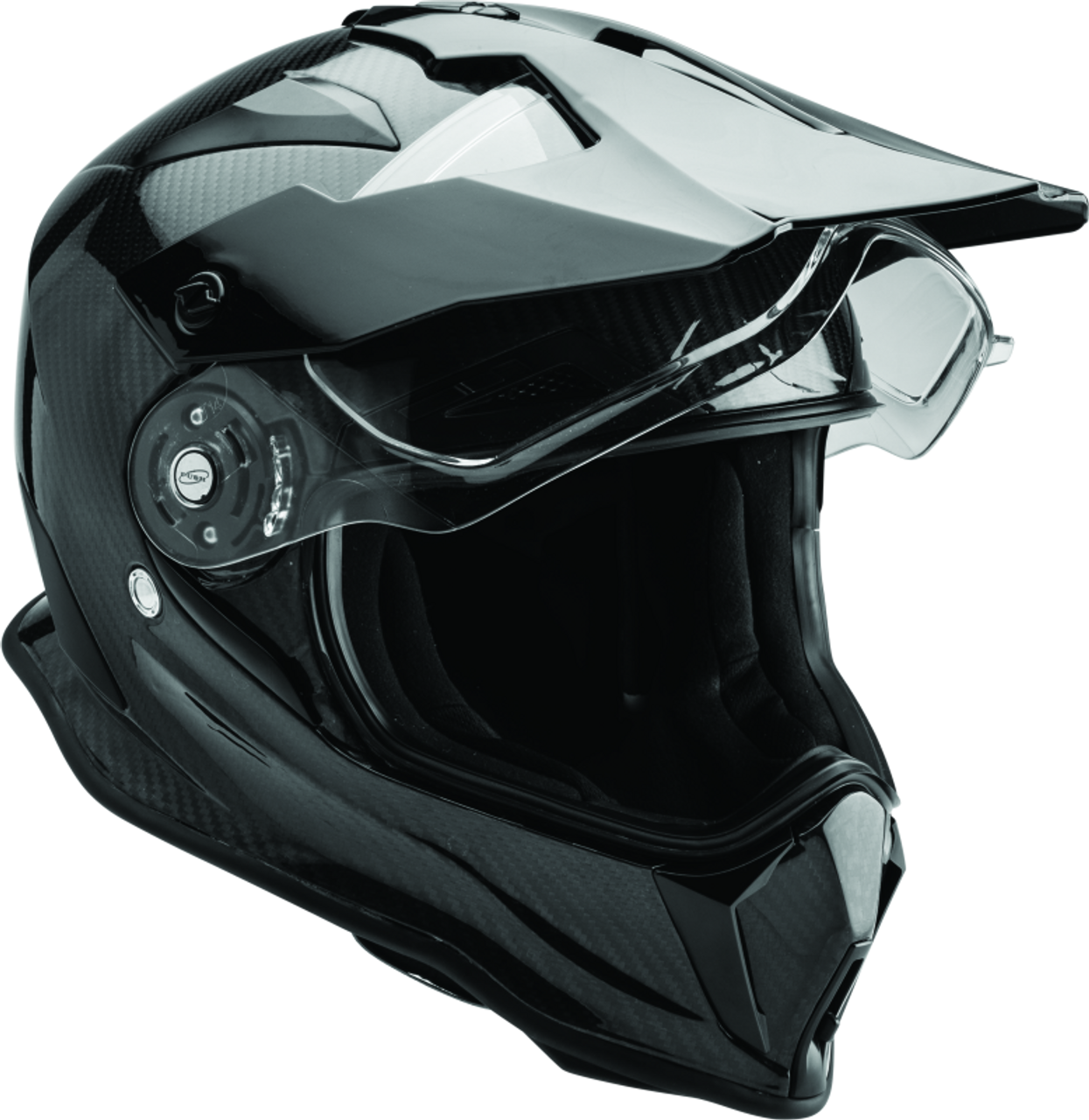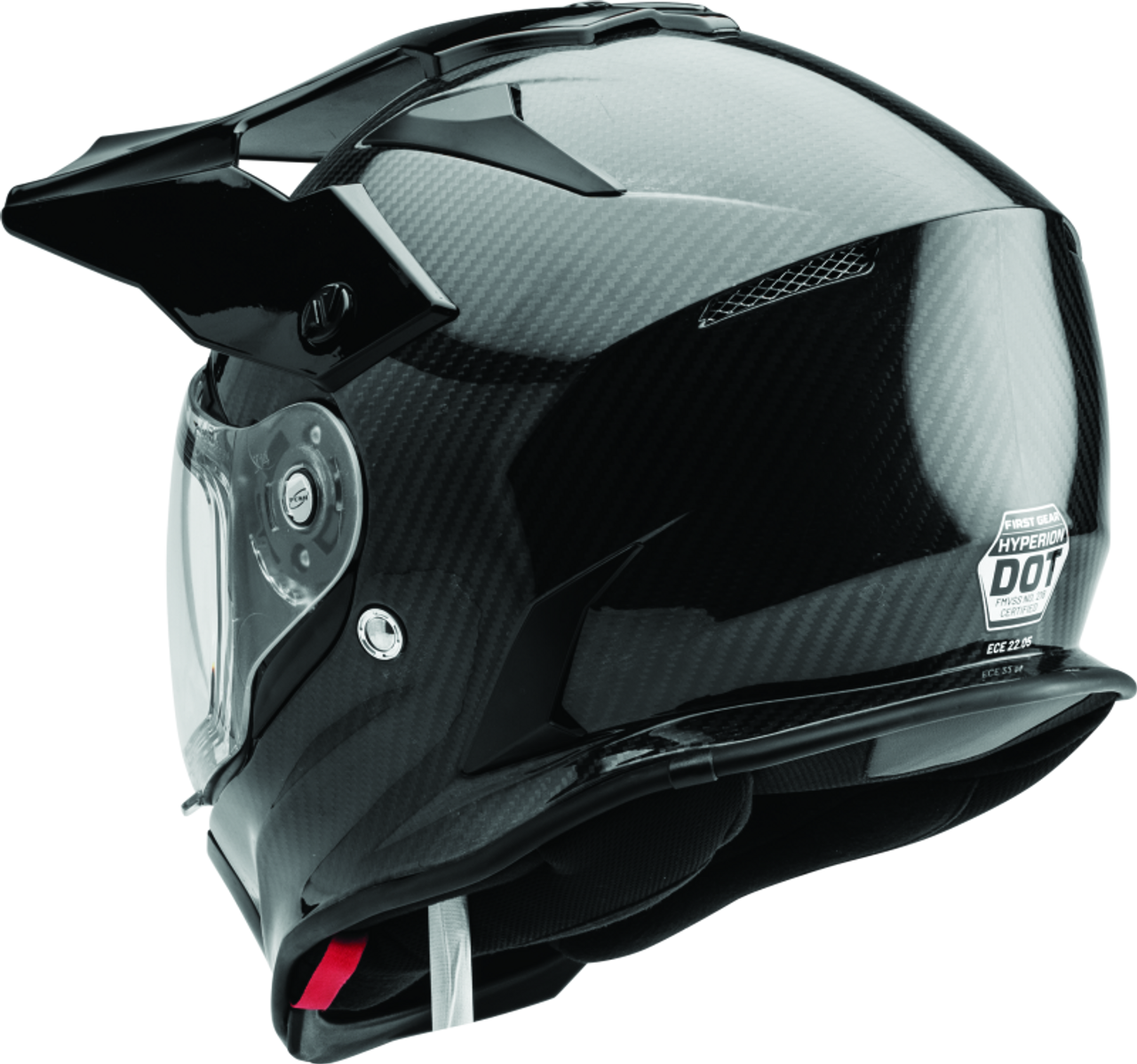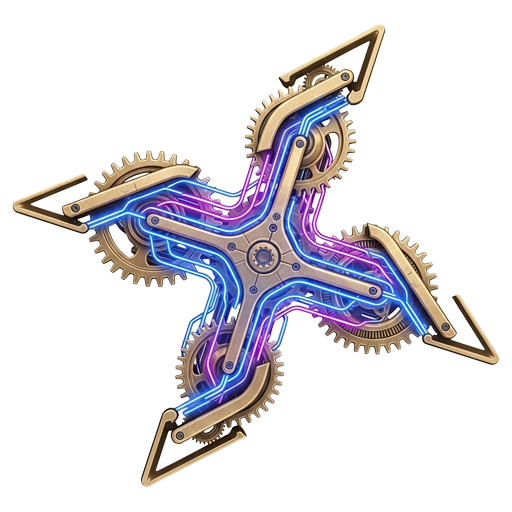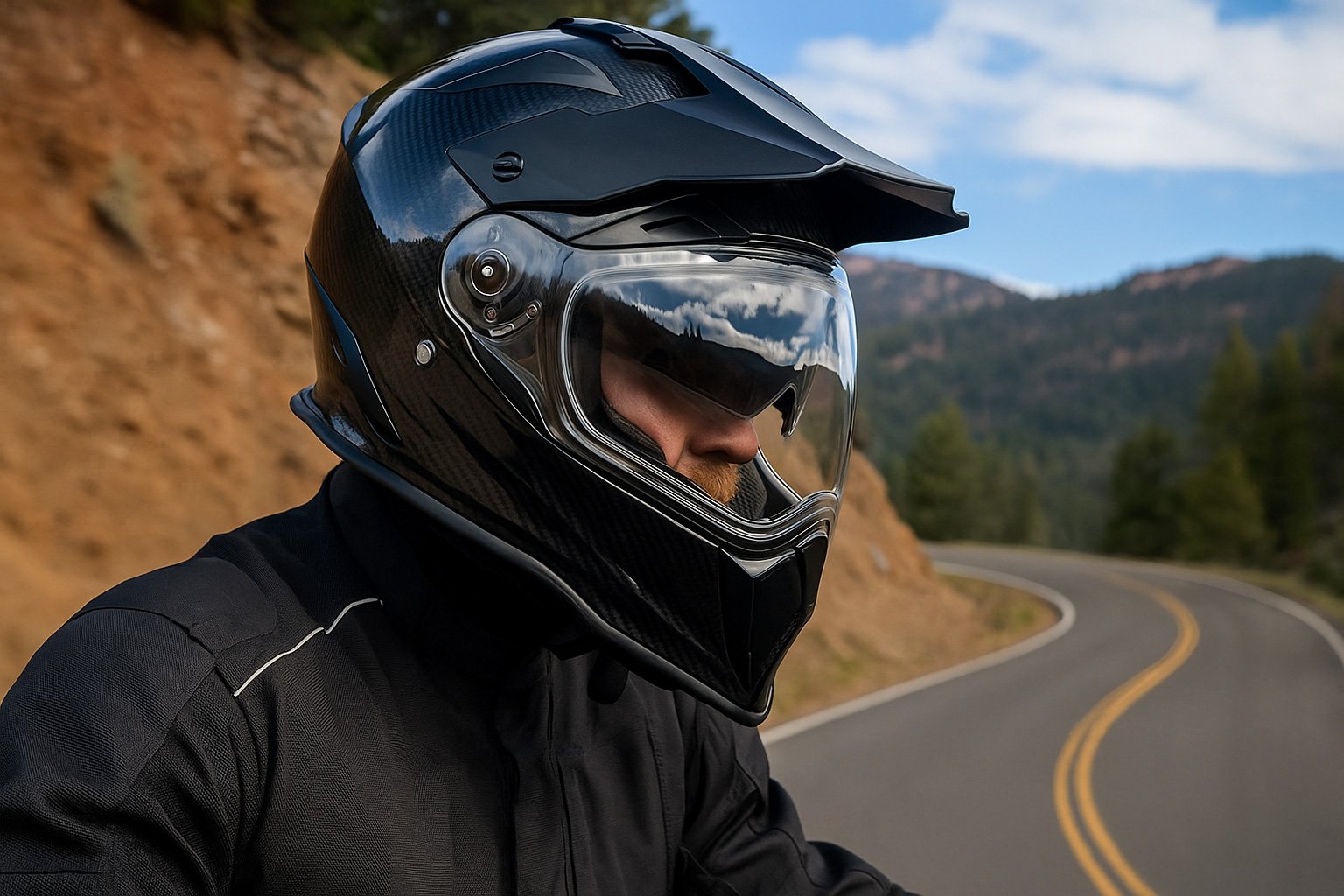The intersection of mass and protection is the most critical axis in helmet engineering. For the adventure touring rider, who logs more hours and miles than most, this balance isn’t a luxury; it’s a fundamental requirement for both safety and endurance. Firstgear, a brand long-synonymous with durable apparel, enters this competitive arena with the Hyperion Carbon, a helmet that stakes its claim on the promise of a featherlight carbon fiber shell. But beyond the seductive allure of its primary material, does the Hyperion possess the integrated engineering and functional nuance to earn a place in the serious rider’s arsenal? We subjected it to our rigorous analysis to find out.
The Hyperion announces its intentions the moment you lift it from the box. The defining characteristic is, without question, its lack of heft. Our size large test model registered a mere 3.6 pounds (1640 grams), placing it firmly in the lightweight class for ADV-style helmets. This isn’t just a comfort metric; it’s a direct assault on rider fatigue. Think of the helmet as a pendulum; every gram magnifies the force exerted on the neck with each bump, gust of wind, and head check. By leveraging a full carbon fiber shell, Firstgear isn’t just chasing a premium talking point; they are addressing a core ergonomic principle. The visible weave, showcased under a deep gloss clear coat, speaks to a high-grade material choice, delivering the inherent rigidity and impact energy dispersion that carbon fiber is prized for.

Core Structure: Beyond the Carbon Weave
Beneath the shell lies the helmet’s primary impact absorption system: a dual-density Expanded Polystyrene (EPS) liner. This is the critical, unseen component tasked with managing impact energy. The use of two densities is a mark of sophisticated design. It’s analogous to a vehicle’s crumple zones; the softer layer allows for progressive absorption of lower-energy impacts, while the firmer layer is engineered to handle catastrophic forces. Firstgear has wisely invested in three distinct EPS sizes to complement the two available shell sizes (covering a fitment range of XS-2XL). This multi-size approach is crucial for ensuring a proper fit, which is directly proportional to safety. A helmet that is too large will have gaps between the liner and the rider’s head, creating a dangerous potential for rotational injury and preventing the EPS from doing its job effectively.
The interior architecture is completed with a plush, moisture-wicking removable liner and emergency-release cheek pads. The latter is a non-negotiable feature for any serious piece of protective equipment, allowing first responders to remove the helmet with minimal strain on a potentially injured rider’s neck. The liner itself is comfortable against the skin, designed for an intermediate-oval head shape, which is the most common fit profile.
Aerodynamics and Environmental Control
The ADV helmet form factor, with its signature peak and larger chin bar, presents a unique aerodynamic challenge. The Hyperion’s peak, while not adjustable, has been sculpted to manage airflow effectively at speed. During on-road testing, it resisted the tendency to catch the wind and create significant lift or buffeting, a common failure in less-refined designs. It acts as a rudder, maintaining stability rather than becoming an aerodynamic liability.
The helmet’s ventilation system is a network of four intake and four exhaust vents. The chin and forehead intakes are adjustable, allowing the rider to meter airflow based on conditions—a necessity when transitioning from a hot, slow-speed trail to a brisk highway pace. The system is effective, creating a palpable current of air across the scalp, a critical factor in maintaining focus and comfort. However, the absence of a chin curtain is a notable omission. This component, standard on many competitors, is key to preventing excessive updrafts, which can lead to wind noise and eye-watering discomfort in colder weather. This suggests the Hyperion is biased towards warm-weather, high-exertion riding where maximum airflow is prioritized over insulation.
The face shield provides a wide, optically correct field of view and seals firmly against the gasket. It is easily removable without tools, allowing for a quick conversion to goggle use for dedicated off-road segments. However, the Hyperion forgoes an internal drop-down sun visor. While this decision undoubtedly contributes to its lighter weight and less complex shell structure, it’s a trade-off in convenience that many touring riders will feel. An optional dark smoke shield is available, but it lacks the on-the-fly adaptability of an integrated solution.

In the Field: The Verdict
On the road, the Firstgear Hyperion Carbon performs as a purpose-built tool. Its low mass is its superpower, translating into a tangible reduction in neck strain over a full day of riding. The balance is neutral, and the aerodynamic profile is clean. Wind noise is present but moderate, without the distracting whistling or booming that can plague helmets with complex ventilation or peak systems.
The core function of a helmet is protection, and the Hyperion carries dual DOT and ECE 22.05 certifications. The ECE standard, in particular, is a rigorous benchmark that includes testing for shell rigidity and the optical quality of the face shield, providing a higher degree of assurance.
Ultimately, the Firstgear Hyperion Carbon is an exercise in focused design. It is not a do-it-all touring helmet laden with every conceivable feature. It is a lightweight, high-performance piece of safety equipment for the adventure rider who prioritizes mass reduction and core protective function above all else. It is a helmet built for the active ADV rider, the one who is standing on the pegs, navigating challenging terrain, and generating enough body heat to appreciate the robust ventilation. The lack of an internal sun visor and chin curtain are conscious engineering choices that subtract convenience but add to the purity of its lightweight mission. For the rider who understands and values that philosophy, the Hyperion Carbon is a compelling and worthy contender.

